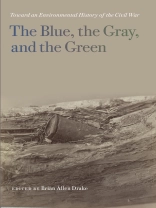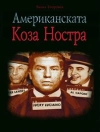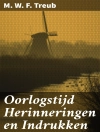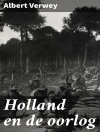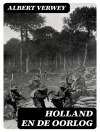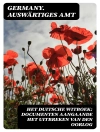The Blue, the Gray, and the Green is one of only a handful of books to apply an environmental history approach to the Civil War. This book explores how nature—disease, climate, flora and fauna, and other factors—affected the war and also how the war shaped Americans’ perceptions, understanding, and use of nature. The contributors use a wide range of approaches that serve as a valuable template for future environmental histories of the conflict.
In his introduction, Brian Allen Drake describes the sparse body of environmental history literature related to the Civil War and lays out a blueprint for the theoretical basis of each essay. Kenneth W. Noe emphasizes climate and its effects on agricultural output and the battlefield; Timothy Silver explores the role of disease among troops and animals; Megan Kate Nelson examines aridity and Union defeat in 1861 New Mexico; Kathryn Shively Meier investigates soldiers’ responses to disease in the Peninsula Campaign; Aaron Sachs, John C. Inscoe, and Lisa M. Brady examine philosophical and ideological perspectives on nature before, during, and after the war; Drew Swanson discusses the war’s role in production and landscape change in piedmont tobacco country; Mart A. Stewart muses on the importance of environmental knowledge and experience for soldiers, civilians, and slaves; Timothy Johnson elucidates the ecological underpinnings of debt peonage during Reconstruction; finally, Paul S. Sutter speculates on the future of Civil War environmental studies.
The Blue, the Gray, and the Green provides a provocative environmental commentary that enriches our understanding of the Civil War.
Sobre el autor
DREW A. SWANSON is assistant professor of history at Wright State University in Dayton, Ohio. He has previously taught at Millsaps College in Jackson, Mississippi, and holds a Ph.D. from the University of Georgia.
